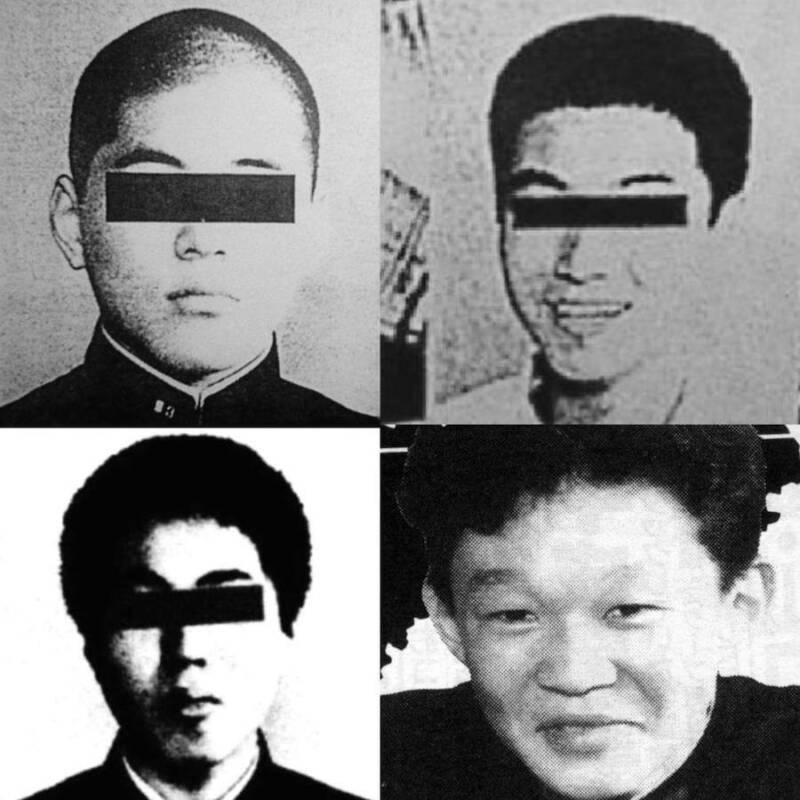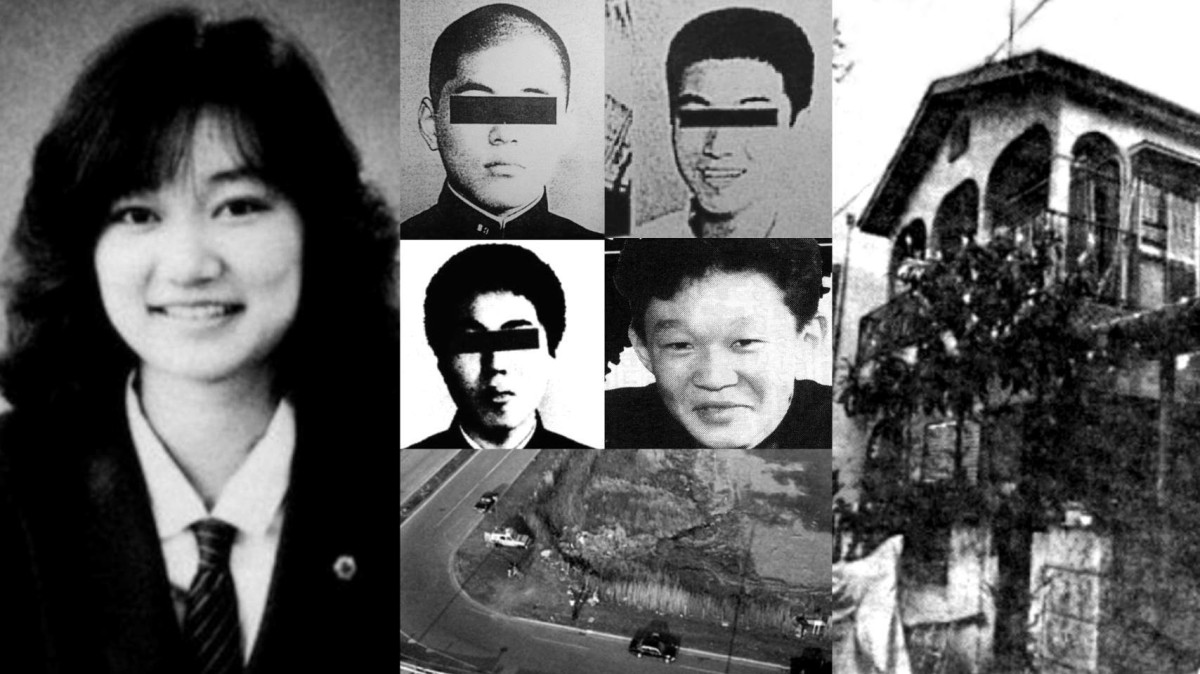Junko Furuta: The Horrific Story & What Happened To Her Killers - Uncovered
Can unimaginable cruelty be inflicted by the young? The case of Junko Furuta, a Japanese high school student, offers a harrowing testament to the depths of human depravity, leaving an indelible mark on the collective memory of Japan and the world.
Born on January 18, 1971, Junko Furuta grew up in Misato, Saitama Prefecture, with her parents, an older brother, and a younger brother. Her life, like that of any other ordinary teenager, was tragically cut short by a series of events that would shock the nation and beyond. In the latter half of the 1980s, Furuta's life took a horrifying turn. On November 25, 1988, at the tender age of 17, her life was irrevocably changed by the actions of four male teenagers: Hiroshi Miyano, Shinji Minato, Jo Ogura, and Yasushi Watanabe. Their actions would culminate in a 44-day ordeal of unimaginable torture, rape, and ultimately, murder, ending on January 4, 1989.
The abduction of Junko Furuta marked the beginning of a nightmare that would push the boundaries of human suffering. Her tormentors held her captive in a residence in the Ayase area of Adachi Ward, Tokyo, subjecting her to unimaginable physical and psychological abuse. This horrific period of captivity became known as the Concrete Encased Murder. Her case became a case study of human rights.
- The Truth Is Jonathan Roumie Married Wife Rumors Facts
- Latest Telugu Movie News Streaming Guide Year Find It Here
The case gained notoriety for the sheer brutality and the young age of the perpetrators. The incident also brought to light critical failures in the justice system and the societal implications of unchecked violence. The details surrounding the torture and murder of Junko Furuta are as disturbing as they are tragic, making this case one of the most horrific criminal cases in history.
| Category | Details |
|---|---|
| Full Name | Junko Furuta |
| Date of Birth | January 18, 1971 |
| Place of Birth | Misato, Saitama, Japan |
| Age at Death | 17 |
| Incident | Kidnapping, Assault, Torture, and Murder |
| Date of Incident | November 25, 1988 January 4, 1989 |
| Location of Crime | Ayase area of Adachi Ward, Tokyo, Japan |
| Perpetrators | Hiroshi Miyano, Shinji Minato, Jo Ogura, Yasushi Watanabe |
| Sentencing | Varies for each perpetrator; Minato initially received 4-6 years, increased to 5-9 years on appeal. Ogura and Miyano received sentences. |
| Additional Information | The case brought worldwide condemnation. The torture and murder of Junko Furuta sparked international outrage, and her case inspired several movies and a manga illustrated by kamata youji. |
| Legal Status | Convicted of various charges, including bodily injury resulting in death. |
| Impact | Inspired several films and manga, and remains a stark reminder of the depths of human depravity. |
| Notable Details | The case is often referred to as the "Concrete Encased Murder" due to the manner in which the body was disposed of. |
| Victim's Background | A normal high school girl before her abduction. |
| Legal Proceedings | Court cases, appeals, and the eventual sentences for the perpetrators. |
| Cultural Impact | Movies and manga inspired by the case. |
Reference: Wikipedia - Murder of Junko Furuta
The details of the crime are, to put it mildly, excruciating. The perpetrators, who were all teenagers at the time of the incident, subjected Furuta to horrific acts of physical and sexual violence. The abuse extended over 40 days, from November 25, 1988, to January 4, 1989. The captors forced her to endure unimaginable pain and humiliation, denying her any semblance of human dignity or hope of survival. The physical abuse she suffered was extreme and sustained, with accounts detailing the use of various instruments and methods of torture. She was sexually assaulted repeatedly, and forced to endure degrading acts. The psychological torment was equally devastating; she was held captive, isolated, and subjected to constant threats and intimidation. The concrete drum containing Junko Furuta's remains was found accidentally. The discovery of her body, encased in concrete inside a steel drum, revealed the gruesome fate that awaited her, shocking the public, and triggering a wave of revulsion.
- Sondra Blust Leaks The Truth The Impact Whats Next
- Movierulz 2025 Watch Latest Kannada Telugu South Films Online
The investigation into Furutas murder was a complex and, at times, frustrating process. The discovery was initially accidental, and the police had to work tirelessly to piece together the events. Initial efforts to identify the perpetrators were hampered by a variety of factors, including the youth and lack of criminal records of the perpetrators, as well as the secrecy surrounding their actions. The investigation also revealed that the perpetrators had engaged in a cover-up, attempting to conceal their crimes and evade justice. The police struggled to gather sufficient evidence and build a strong case, with the perpetrators initially attempting to downplay their involvement and deflect blame. The eventual breakthrough came during a police interview, when one of the killers, disoriented by the line of questioning, mistakenly believed the officer was already aware of the murder, leading to a confession. This confession proved crucial in securing the convictions of the perpetrators and bringing some measure of closure to the case. However, it was the initial arrest of Miyano and Ogura for a separate rape charge that ultimately exposed the truth. Their involvement in this other crime, along with the subsequent investigation, led to the unearthing of the horrific truth surrounding Junko Furuta's disappearance.
The trial of the perpetrators was a landmark case, drawing significant public and media attention. The courtroom proceedings were marked by a sense of outrage, disbelief, and a desperate search for justice. The victims' families, friends, and the public at large sought to understand the motivations of the perpetrators and the extent of their crimes. The trial was a battle of legal arguments and the presentation of the harrowing evidence. The details of the torture and abuse were laid bare for the public to hear, triggering widespread horror and condemnation. The defense attorneys argued for leniency, while the prosecution sought to ensure that the perpetrators were held fully accountable for their actions. Despite the gravity of the crimes, the sentences handed down were, to many, seen as lenient, sparking a debate about the fairness and effectiveness of the justice system. The court proceedings involved legal battles, appeals, and public scrutiny. The initial sentences were met with significant criticism, and the sentences were later increased on appeal.
The aftermath of the Furuta case has been marked by a range of responses and developments. The public outcry led to the development of victim support services, aimed at providing assistance and resources to victims of crime and their families. The case led to a re-evaluation of juvenile justice and the treatment of young offenders. The justice system has since been overhauled to protect future victims. Media coverage, including documentaries, movies, and manga, has kept the case in the public eye, and some of the perpetrators, like Jo Kamisaku, continued to make headlines after their release. The case has also had a lasting impact on Japanese society, prompting a broader discussion about violence, youth crime, and the importance of protecting vulnerable individuals.
The case has been immortalized in popular culture, primarily as a way to confront the horrors of the crime and its impact. The case has been examined in documentaries, movies, and a manga illustrated by Kamata Youji, which depict the events and the characters involved in the crime. It is worth noting that these representations often come with significant criticism for possibly glorifying the crime or causing additional trauma to the victims' families. The case has sparked international outrage, and her case inspired several movies and a manga illustrated by kamata youji. "Konkurto" is a film based on the case, directed by Katsuya Matsumura and starring Yujin Kitagawa, remains one of the most well-known portrayals.
The impact on the families involved was devastating. The parents of Junko Furuta, Akira Furuta and her mother, have lived a private and undisclosed life after the tragic events. The mother, whose name is not widely known, had a loving relationship with her daughter and was undoubtedly devastated by the unimaginable suffering she endured. The parents' experience, marked by the immense pain and grief of losing their child, stands as a testament to the lasting damage of violent crime. The case also had implications for the families of the perpetrators. Jo Kamisaku's father felt shame and said he would give his life savings to Furuta's family, while Jo spent the money on himself. Jo's mother blamed Furuta for ruining her son's life and allegedly vandalized Furuta's tombstone.
What happened to Junko Furutas killers? The four perpetrators of this heinous crime faced very different paths after the murder. Hiroshi Miyano and Jo Ogura were arrested for a separate gang rape charge two weeks after Furuta's body was found. Shinji Minato, despite being 16 at the time of the murder, was tried as an adult. He was sentenced to 4 to 6 years in prison in 1990 after pleading guilty to committing bodily injury resulting in death. This sentence was later increased to 5 to 9 years after an appeal by Judge Ryuji Yanase. Jo Ogura and Hiroshi Miyano also served their time, though details of their later lives are less known. Yasushi Watanabe is the only one of the four to have seemingly avoided further legal trouble. According to a magazine, he has largely dropped off the radar, now reportedly living with his mother. Jo Ogura, after his release, changed his name, and in 2004, he assaulted a man who he believed had slept with his girlfriend. The actions of Jo Kamisaku, who changed his name, bragged about the murder, and squandered money meant for Furuta's family, offer a glimpse into the complex and often troubling aftermath of the case.
The case of Junko Furuta stands as a grim reminder of the capacity for cruelty that can reside within human beings. Her story serves as a call for justice, compassion, and a commitment to protecting vulnerable individuals. Her memory lives on, as does the need for society to learn from the tragedy. The lasting legacy of Junko Furutas murder forces a reckoning with the darkest aspects of human nature.
- Your Guide To Bollywood Streaming Movies Year Find It Here
- Movierulz Latest South Indian Films Reviews 2025 Guide

Junko Furuta's Murder And The Sickening Story Behind It

Murder of Junko Furuta Concrete Case

The murder of Junko Furuta Did they ever catch her grisly killers?